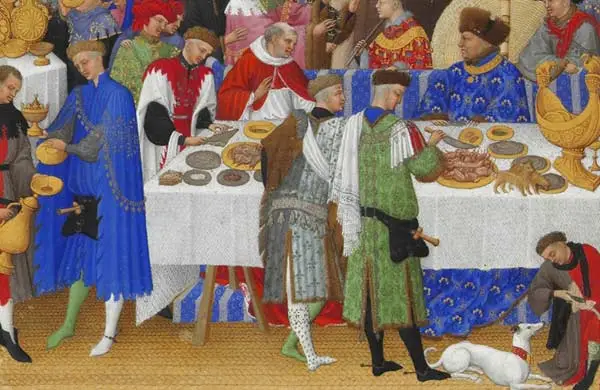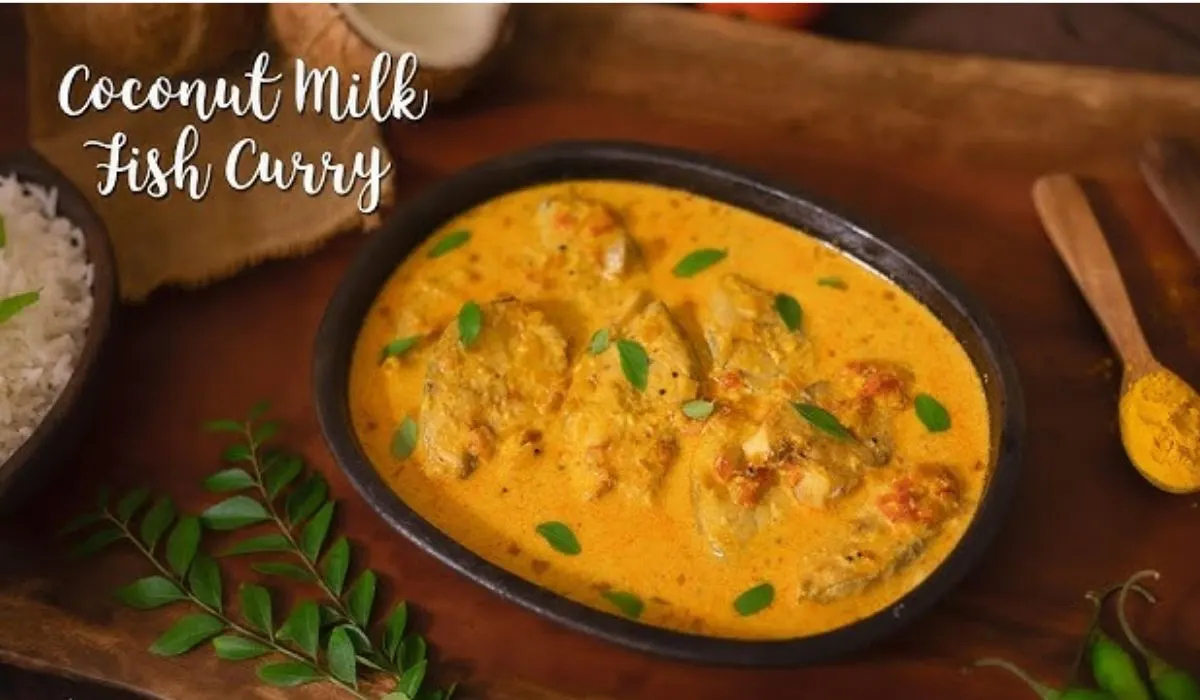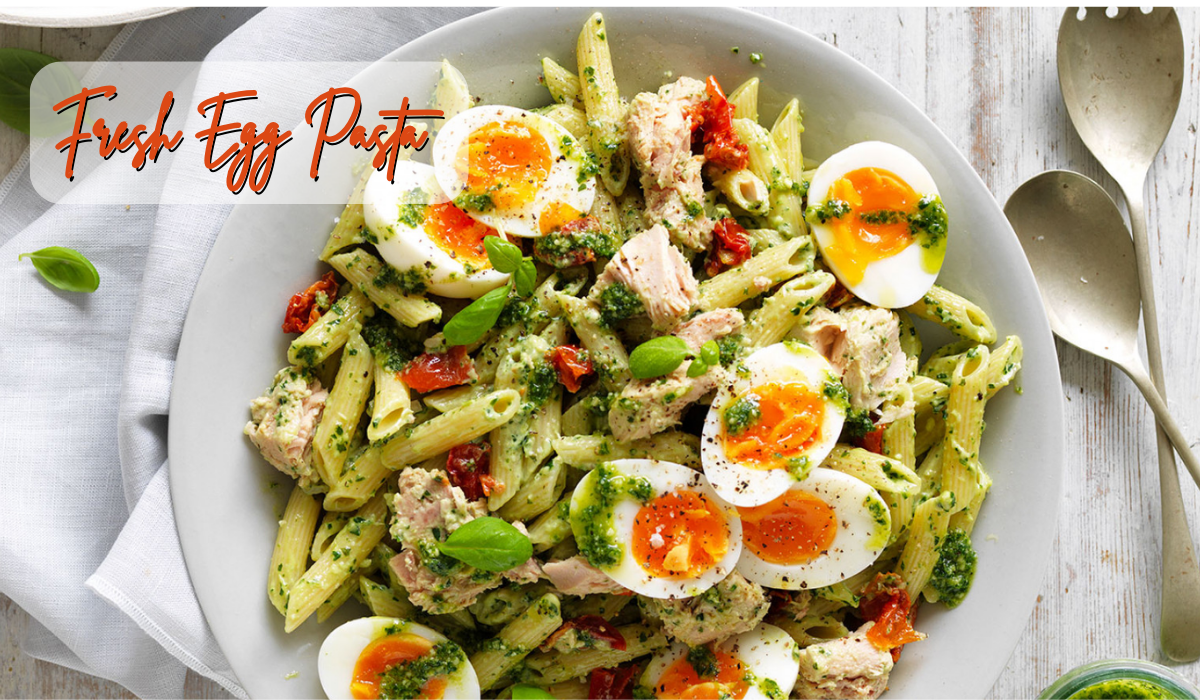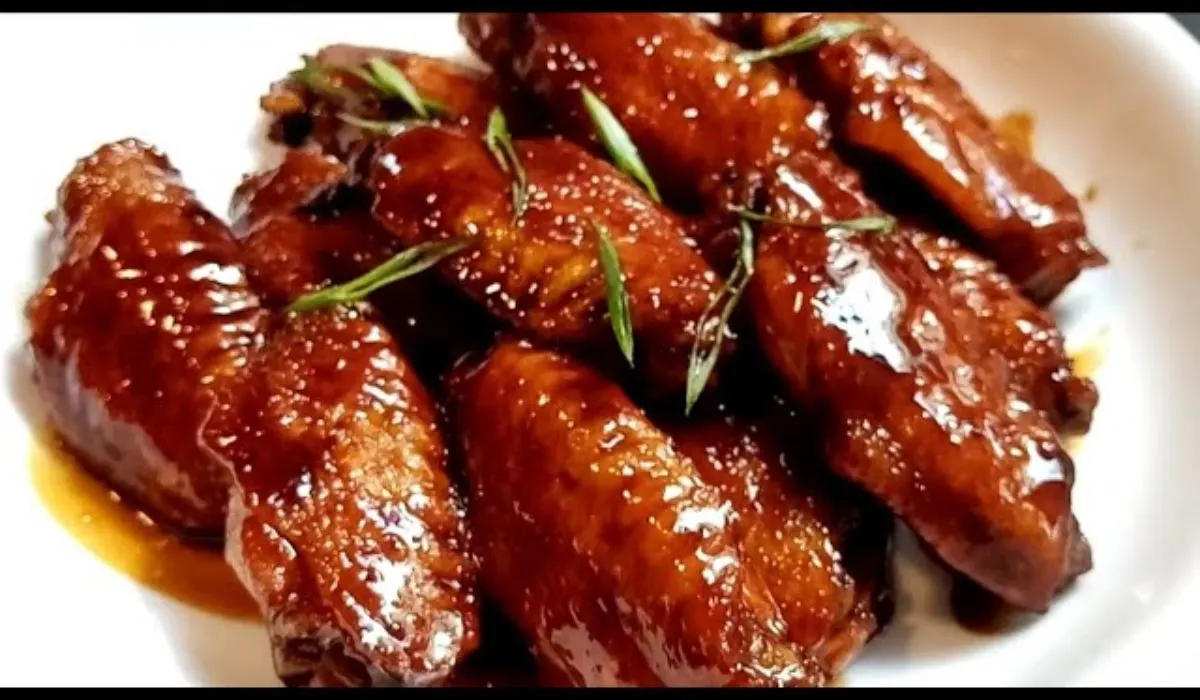At any point thought about what food resembled in the Primary Source Of Middle Ages Food Recipes​? Curiously, middle age food was a mishmash of luxurious dining experiences for the rich and easier toll for the laborers. This blog will take you on an interesting excursion through chance to investigate everything from fundamental eating regimens to stupendous dinners during this verifiable period.
Read Also: How Long Does It Take to Prepare Garlic Parmesan Chicken Pasta?
Understanding the Medieval Diet
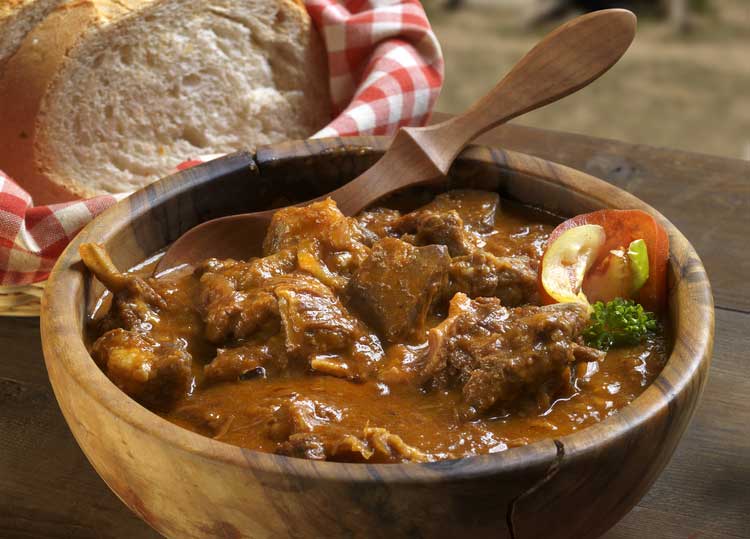
Cereals
In the Primary Source Of Middle Ages Food Recipes, cereals assumed a basic part in supporting the populace's eating regimen. Grain, oats, rye, and wheat were generally ordinarily consumed. These grains filled in as fuel for dedicated individuals and gave the essential supplements to keep them sound.
Numerous middle age dishes are really the harbingers of advanced recipes. Standard, stew is an extraordinary illustration of a middle age dish that is as famous now as it was hundreds of years prior.
If you have any desire to cook a middle age dish, the Recipes Framework is the spot to search for thoughts!
Natural product
In the Medieval times, natural product was broadly viewed as an extravagance thing because of its occasional accessibility and conservation challenges. Famous natural products included apples and pears, generally consumed in their dried structure for life span purposes. The utilization of other dry assortments like figs, dates, raisins and prunes frequently highlighted in sweet dishes or pastries for a touch of pleasantness.
Fish and Fish
Fish and fish were a significant piece of the archaic eating routine. Usually consumed fish included herring, cod, pike, carp, bream, roost, lamprey, and trout. These fish were much of the time protected through salting, drying, or smoking techniques. Beach front and waterway abiding populaces additionally delighted in molluscs like shellfish, mussels, scallops, and freshwater crawfish. The utilization of fish and fish shifted in light of topographical area during bygone eras.
Must Read: Palm Spring Theme Party Food: Your Complete Guide
How Have Recipes Survived?
There is close to nothing, contemporary documentation for archaic dishes and their recipes from twelfth century Europe. This was on the grounds that main a low level of the populace were educated. Be that as it may, antiquarians have found a few veritable, unique put down accounts about middle age cooking. The essential one from middle age Britain is classified "The Forme of Cury". It records no less than 200 recipes from the time of Ruler Richard II of Britain. (Cury is early English for cookery)
Numerous recipes obviously have been passed somewhere around informal, from one age to another. Throughout the long term individuals have drawn on this acquired information - for two reasons. Right off the bat, to keep eating what their precursors ate. Furthermore, to refine a few recipes by differing the fixings. For instance, not many individuals today heat with grain as was conventional in bygone eras. Rather they use wheat while baking bread.
Follow the connections to the singular segments of recipes here, like bread recipes, and you will start to find a few amazing realities.
A portion of these realities will connect with similitudes between middle age dishes and present day ones. Others will be the whole inverse, especially with regards to the fixings utilized.
Medieval Dish vs Modern Recipe
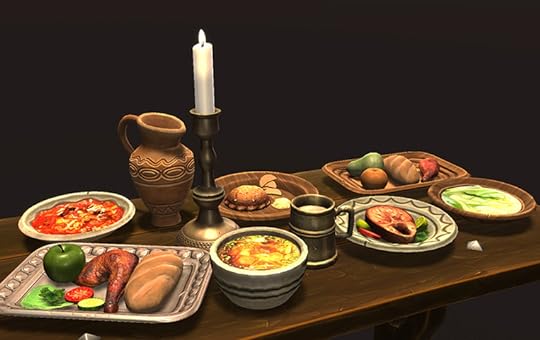
An extraordinary illustration of likeness among middle age and current food is hamburger and red wine stew. It's a decent recipe which is as pertinent today as it was in bygone eras. Hamburger stew has for some time been a well known meat dish. The fixings might have changed throughout the years however just a bit and not drastically. It is still basically a meat stew with red wine!
One of the significant contrasts among middle age and present day food is salad. Salad was very unique then to the plate of mixed greens we know today. Lettuce, tomatoes and cucumber that a considerable lot of us grew up with were just not accessible in middle age Europe. Middle age salad recipes comprised primarily of blossoms and herbs.One of the most outstanding things about food from that period is that it repeated a class division. Nourishment for the rich and nourishment for poor people.
Recipe Variations In Medieval Times
The normal archaic man and his family (workers) had far less fixings accessible to them. They frequently kept chickens however by and large didn't eat them as they were expected to create eggs. They were not permitted to chase in the timberlands possessed by aristocrats, so deer and wild pig were meats just for the ruler's table. The equivalent applied to freshwater fish. So the normal working family's eating regimen was very boring. Spices and vegetables and bread shaped the center of their Primary Source Of Middle Ages Food Recipes.
You can peruse more about this on my starting page about middle age food overall. I have chosen different archaic dishes to highlight in this site. The thought is to mirror the various eating regimens of both the archaic honorable and middle age workers. I truly want to believe that you will find happiness and fervor in the taste experience they offer.
Food in Middle Ages England – the mother country
The place that is known for my immediate precursors is Britain, which was alluded to as 'the homeland' in my life as a youngster by my grandma.
Britain was framed in the tenth century when numerous little realms joined into one bigger Kingdom.2 The Skirmish of Hastings in 1066 was the last time Britain was attacked by an unfamiliar power. This appeared to be a consistent time span to begin my food history venture.
Diet and food in the Medieval times Britain
Food in medieval times Britain fluctuated throughout various time spans and from the well off to Medieval food for the poor.
Grains and vegetables
- Food in Medieval times Britain depended on grains and vegetables. 4,9,10,11,12
- Grain, rye, oats and millet were eaten by poor people.
- Wheat, which required costly compost, was become at first just for rich ranchers, progressively spreading to bring down classes and turning into a staple nourishment for all classes.
You May Also Like: Cheap Dinner Ideas That Are Easy And Delicious
Vegetables and organic product
- Vegetables were reliant upon those developed or dealt.
- Note that the term 'vegetable' was not utilized in Britain until the mid fifteenth 100 years. Preceding that, consumable plants were alluded to as spices.
- Underground vegetable sorts were viewed as unsuitable for respectable classes and just eaten by poor people.
- Vegetables were cooked as crude structures were viewed as the reason for illness.
- Natural product was cooked, served in pies, or sugar coated.
Meat, poultry, and fish
- The term 'meat' recently implied strong food overall.
- In the fourteenth century it implied tissue of creatures and later meat from dairy cattle, pigs and sheep particular from poultry and fish.
- For meat food in Medieval times Britain:
- High societies ate more venison, meat, pork, goat, sheep, bunny, rabbit, lamb; game including deer, hog, rabbits, hares; and birds including swans, herons, geese, ducks, bird, pea-fowl, turkey, crane, crow, stork, thrush, dark birds, quail, cuckoo, and partridge.
- The fundamental meat food in medieval times Britain for workers was pigs. They were modest, ran free in backwoods and were accessible all year. Different creatures required butchering in pre-winter to save money on winter-taking care of.
Dairy food in Medieval times Britain
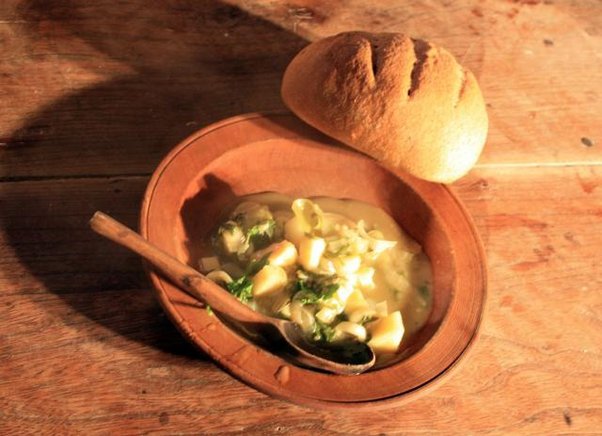
While dairy food varieties, particularly cheddar, was drunk all over Europe as a feature of the eating regimen in the Medieval times, milk drinking was bound to cooler districts because of deterioration in warm temperatures. In Britain, milk was plastered in cultivating regions albeit frequently held for the youthful.
Refreshments
With Primary Source Of Middle Ages Food Recipes, and milk challenging to keep new, the commonest drink was brew produced using grain, mead or juice. It was more vulnerable in liquor than the present principles and viewed as a wholesome piece of the eating routine. Enormous sums were distributed in corrodities. The affluent in urban communities additionally Medieval food recipes for peasants.
Utensils
Bowls and spoons were the primary executes utilized. Sovereignty ate from flatware or gold dishes, lower classes from wooden or horn. Fluids, including soup, were tipsy from cups. Blades had been for quite some time utilized while forks were presented exclusively from the Medieval recipes for Kids.
Recipes
- Recipes exist from the Medieval times, most from Aristocrats' families.
- Verifiable occasions in the Medieval times influencing food and endurance
- In the twelfth thirteenth century Britain had irregular contribution in the Campaigns, a multiplying of its populace and a development in towns.
- Rolls, of bread heated two times, were created by the crusaders, and were found valuable on lengthy explorers as they kept well. The crusaders brought back flavors, raisins, dates, figs and sugar from the Center East. Flavors included Pepper, Cinnamon, Cloves, Nutmeg, Ginger, Saffron, Cardamom, Coriander, Cumin, Garlic, Turmeric, Mace, Anise, Caraway and Mustard. The principal enormous shipment of sugar to Britain was kept in 1319. Flavors and sugar were costly and, at that point, were just consumed by the well off.
- The monetary ramifications of the development in towns and urban areas happened in the later hundreds of years of the medieval times and by 1500 which has been assessed to be roughly 20% of the populace contrasted with 10% toward the beginning of high-medieval times.
The passing of Henry VII in 1509 denoted the beginning of the early current time frame.
Archaic Cookery Books and their Recipes
Jean de Wavrin's Narratives of English History is a huge composition related with middle age cookery books and their recipes. This work gives important experiences into the culinary acts of the Medieval times, particularly in the places of Easy medieval food recipes.
The Craft of Food Conservation in the Middle age Period
Primary Source Of Middle Ages Food Recipes was a urgent expertise in the middle age period, as it permitted individuals to store and protect nourishment for significant stretches of time. Different techniques were utilized during that opportunity to hold food back from ruining. Drying was one normal strategy, where natural products, vegetables, and meat were got dried out to eliminate dampness content and expand their time span of usability. Smoking was another normally utilized strategy, particularly for fish and meat.
The Significance of Herbs and Spices in the Medieval Kitchen
Spices and flavors held extraordinary importance in the archaic kitchen, adding flavor, fragrance, and assortment to the frequently repetitive eating regimen of the Medieval times. Normal spices like sage, parsley, caraway, and mint were developed and utilized all through Europe as options in contrast to costly flavors. They were effectively open to both the honorability and lower classes the same. Flavors like ginger, pepper, nutmeg, cardamom, and saffron were profoundly valued for their extraordinary flavors yet were restricted to

